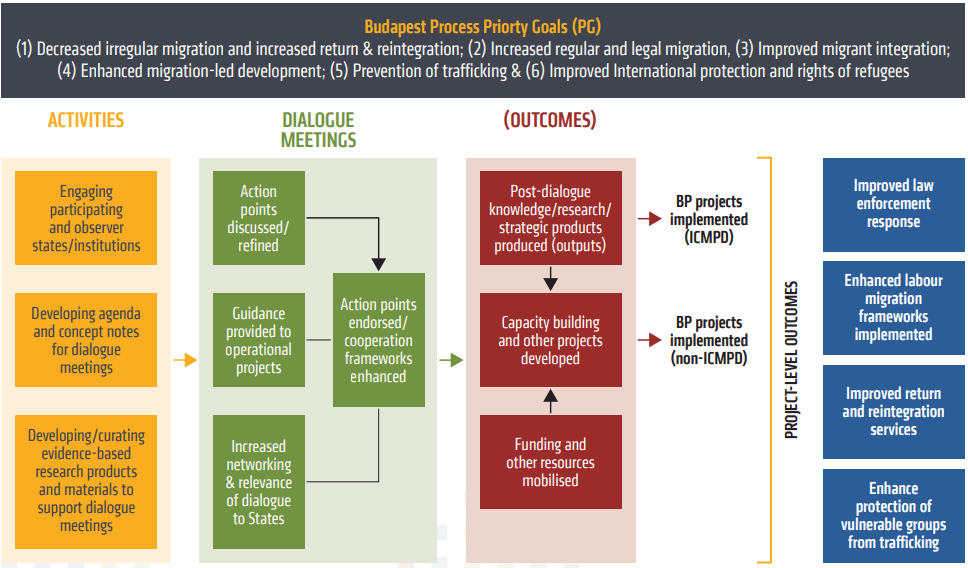In the last three decades, the Budapest Process has become a well-known and respected dialogue on migration. Its activities and partners’ commitment to the Dialogue have been a sign of it success.
After the 6th Ministerial Conference in 2019, a commitment from dialogue partners had been made to measure and track the dialogue’s results and ultimately showcase the dialogue’s impact. This process starts at the level of the dialogue’s activities which are designed to produce meaningful outputs. However, outputs must transform into outcomes and generate impact, and this requires tracking. For this reason, Senior Officials entrusted the BP Secretariat to create its Theory of Change as well as a Monitoring, Evaluation and Learning (MEL) tool that could track results through surveys and other measurement methods that ensure on-going learning and feedback from activities.
Theory of Change (ToC)
The Budapest Process (BP) dialogue is built on an inherent logic and theory of change (TOC) that describes what change the dialogue aims to make (through its six priority goals) and how it aims to achieve this change. The ToC shows how the BP measures its progress towards its longer term outcomes of:
- Improved law enforcement response to smuggling of migrants and trafficking in persons;
- Enhanced implementation of labour migration frameworks;
- Improved return and reintegration services; and
- Enhanced protection of vulnerable groups and victims of trafficking.

The Monitoring and Evaluation Tool – Tracking and Measuring the Dialogue
The Budapest Process’ MEL tool is used to collect data that can be analysed to show the results of its activities. The data for the MEL tool is gathered thorough monitoring of activities and their outputs as well results from post-meeting and bi-annual surveys.
Most recent outcomes of recently adopted MEL Tool has been shared with partners during the 33rd Senior Official Meetings on 5 December 2023. It can be found here.

